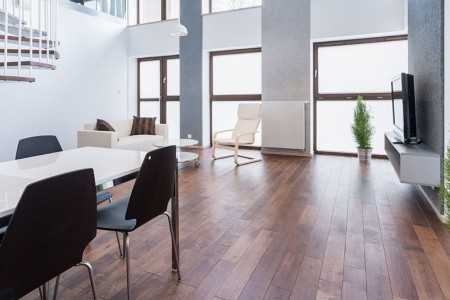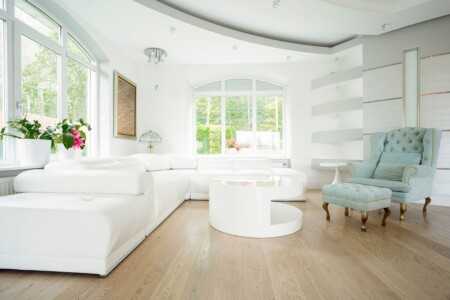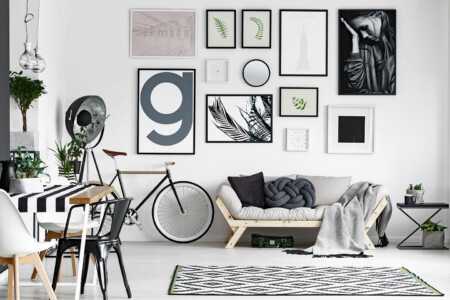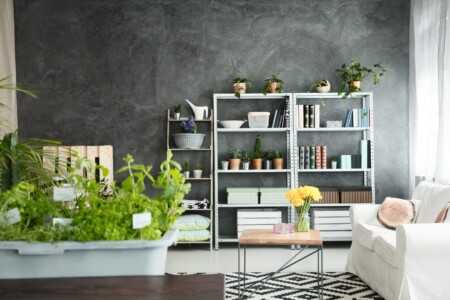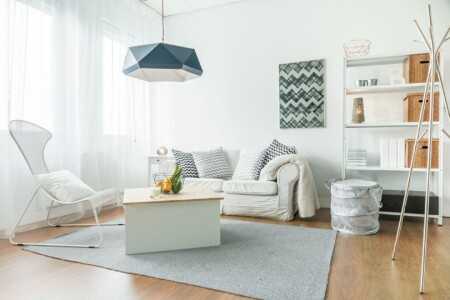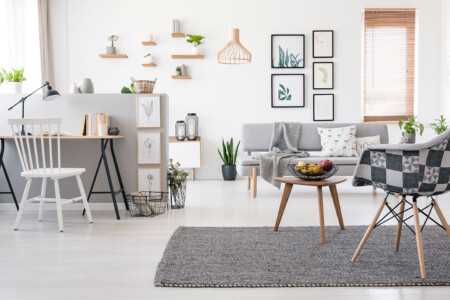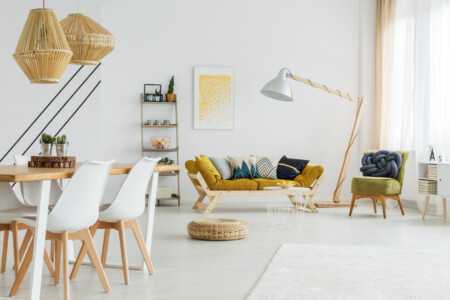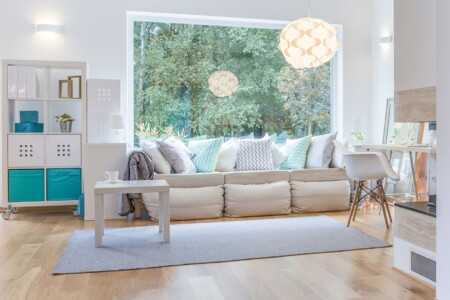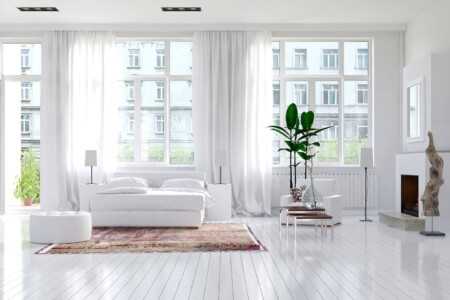How suitable is this 2 persons 1-room studio in Hurghada Mubarak 7 for school-age children?

Evaluating the suitability of a 2-person 1-room studio in Hurghada Mubarak 7 for school-age children
Assessing space and comfort for school-age children
When considering a 2-person 1-room studio in Hurghada Mubarak 7 for school-age children, space is a key factor. These studios are designed primarily for two adults and typically consist of one main room that combines living, sleeping, and sometimes cooking areas. For school-age children, especially those between 6 and 12 years old, having adequate personal space is important. In a single-room layout, children will share the living area with parents or guardians, which may affect their ability to focus on studies or have quiet time.
The limited space might also restrict play and physical activity indoors. School-age children often need enough room to engage actively, whether through simple indoor games, creative projects, or even exercising on rainy days. While a studio apartment’s compact design efficiently uses space, it could feel cramped to a family unit involving children. Considering this, the studio may be more suitable as a short-term stay or for families accustomed to minimalist living and ready to adapt to close-quarters environments.
Safety considerations for children in a one-room studio
Safety is a top priority when choosing accommodation for school-age children. In Hurghada Mubarak 7, a 2-person studio is typically located in residential complexes that often offer secure environments with controlled access and on-site security. However, inside the studio itself, parents need to evaluate childproofing opportunities carefully.
Since the space is open plan, areas like the kitchen and living/sleeping spaces are in close proximity. This means parents need to ensure that sharp objects, cleaning supplies, and electrical outlets are all secured. For young school-age children, this proactive safety setup is essential to prevent accidents. Additionally, studio apartments may have balconies or windows that require child-resistant locks to ensure children cannot access potentially dangerous heights or areas.
Proximity to educational and recreational facilities in Hurghada Mubarak 7
Hurghada Mubarak 7 is a well-established neighborhood known for its growing amenities, including schools, parks, and recreational centers. For families with school-age children, the location of the studio can be a major advantage given its close proximity to educational institutions. Many international and local schools in Hurghada are accessible within a short commute from Mubarak 7, making daily school runs convenient.
Besides academics, access to recreational areas such as playgrounds and community centers supports children’s social and physical development. A studio in this region provides parents with easier access to these essential resources without long travel times. This advantage helps balance the smaller living space, as children can spend quality time outside, participating in community activities or outdoor sports.
Impact on children’s study routine and privacy
Space constraints in a 2-person 1-room studio may influence how effectively school-age children can maintain a consistent study routine. Children typically benefit from having a dedicated study area, free from distractions, to improve concentration and productivity. In a studio apartment, parents might need to get creative, perhaps designating a quiet corner for studying or using portable desks.
Privacy is another consideration. As children grow, they often seek personal space for reading, homework, or creative activities. The shared environment of a studio might make this difficult, potentially impacting their emotional well-being. Nevertheless, families that place strong emphasis on outdoor activities or after-school programs could mitigate this limitation by encouraging children to spend more time outside the apartment.
Advantages and drawbacks of choosing this studio for school-age children
Understanding both the positive and negative aspects of a 2-person 1-room studio in Hurghada Mubarak 7 helps parents make informed decisions:
- Advantages: Close proximity to schools and recreational facilities, cost-effectiveness, ease of maintenance, and a secure residential complex.
- Drawbacks: Limited space with no separate rooms for privacy, potential challenges in creating a distraction-free study environment, and minimal indoor play area.
Suggestions for enhancing suitability for school-age children
If you are considering this studio for your family, several adjustments can improve the living experience for school-age children:
- Create multi-functional zones within the main room using room dividers, curtains, or furniture placement to offer some separation between sleeping, studying, and play areas.
- Invest in compact, foldable study desks and child-friendly storage solutions that keep school materials organized and readily accessible.
- Encourage a balanced lifestyle where children spend plenty of time outdoors at local parks or community centers to compensate for indoor space limitations.
- Ensure child safety with outlet covers, locked cabinets, and supervised kitchen access to reduce hazards.
By actively planning and adapting, a 2-person 1-room studio in Hurghada Mubarak 7 can serve as a practical living space for families with school-age children, especially for short to medium stays. However, for long-term residency, families might want to consider larger housing options that better accommodate children’s growing needs for space, privacy, and study environment.
Tips for creating a child-friendly living space in a compact studio apartment
Making the most of limited space
Living in a compact studio apartment offers unique challenges, especially when you have school-age children who need room to study, play, and relax. Creating a child-friendly environment in such a small area requires thoughtful planning and clever use of space. You want your little ones to feel comfortable and safe without feeling cramped or overwhelmed. Start by looking for multifunctional furniture. For example, a sofa bed or a loft bed with a desk underneath can save valuable floor space. Using vertical space wisely helps, too—think tall shelves or wall-mounted storage that keeps toys and books organized and off the floor.
Designated zones for different activities
Even in a one-room studio, having areas dedicated to specific activities can help children feel more settled. You can create an easy-to-change divided space using rugs or room dividers that don’t take much room. One zone could be for study with a small, well-lit desk and school supplies, and another could be a play area with soft mats or cushions. When kids have their own space for learning and fun, it supports their development and makes the studio feel more like a home.
Choosing child-friendly and safe furniture
Safety is a top priority when preparing a living space for school-age children. In a small studio, sharp corners and unstable furniture pose risks. Opt for rounded-edge tables and sturdy, secure storage units. Low shelves and bins make toys and books accessible to kids while teaching them to clean up after themselves. Avoid heavy décor or items that can easily topple down during play or movement around the room. If possible, secure furniture to walls for added stability.
Smart storage solutions to keep clutter at bay
Clutter can make a small space feel even smaller. Efficient storage is key to maintaining a clutter-free environment suitable for children. Look for stackable storage boxes, under-bed storage containers, and furniture with built-in compartments. Labeling storage clearly with pictures or words can help children identify where their belongings belong. This not only keeps the apartment tidy but also encourages responsibility in your kids.
Lighting and ventilation for a healthy environment
Good lighting and ventilation are essential, especially in a compact space where natural light might be limited. Place study desks near windows if possible to maximize daylight, which enhances focus and reduces eye strain. Adding adjustable lamps supplies ample lighting during darker hours. Proper ventilation keeps the air fresh and reduces the risk of respiratory issues. Regularly open windows when the weather permits, and consider using air purifiers if airflow is insufficient.
Educational and creative spaces
A child-friendly living space supports learning and creativity. Even in a smaller apartment, you can include a small art corner or bookshelf where your child’s favorite books and craft supplies are ready to use. Displaying artwork or school projects on the walls makes the space feel personalized and inspiring. Use clipboards or corkboards that can be changed frequently, keeping the area dynamic and engaging.
Maintaining flexibility for growing needs
Kids grow quickly, and so do their needs. Design your compact living space to be adaptable. Modular furniture that can be rearranged or adjusted accommodates changes in routine or school projects. Storage solutions should be easy to modify or expand to fit new toys, books, and school materials. Creating a flexible environment means you won’t need to completely overhaul the space every time your child reaches a new developmental stage.
Encouraging organization and responsibility
Teaching school-age children to organize their belongings in a compact space builds good habits early. Use colorful bins and labels to make sorting fun and straightforward. Encourage daily tidying routines with simple checklists or reminders. When children learn to care for their environment, it reduces stress for everyone and makes the studio a more enjoyable place to live.
Balancing privacy and togetherness
In a single-room studio, privacy may be limited, but it’s important to find ways to give your child moments to themselves. Use curtains, screens, or room dividers to create a semi-private nook. This can serve as a calming retreat during busy days or a quiet place for homework. At the same time, balance these moments with spaces for family interaction to support emotional connection and communication.
Final thoughts on creating a nurturing space
Creating a child-friendly living area in a 2-person, 1-room studio like the ones in Hurghada Mubarak 7 is certainly possible with practical planning. By focusing on multifunctional furniture, smart storage, defined activity areas, and safety, you can build an inviting space where school-age children thrive. Remember, the key lies in maximizing every inch thoughtfully while keeping the environment calming and inspiring. With these strategies, you ensure that the compact studio supports your child’s growth, learning, and comfort effectively.
Summary of key points
Choosing a 2-person, 1-room studio in Hurghada Mubarak 7 as a living space for school-age children requires thoughtful consideration. While the compact design may present challenges like limited space and privacy, it also offers opportunities to foster close family bonds and teach children organization skills from an early age. By carefully evaluating the studio’s layout, light, ventilation, and proximity to schools and parks, you can determine if it meets your children’s daily needs.
Creating a child-friendly environment in such a small space means prioritizing smart storage solutions, multi-functional furniture, and safe zones where children can play and study without distractions. Bright colors, clear floor plans, and designated areas for homework and rest enhance comfort and growth. Remember, regular decluttering and involving your children in organizing their space can turn the studio into a cozy, efficient home suitable for school-age kids.
Ultimately, a 2-person, 1-room studio in Hurghada Mubarak 7 can work well for families with school-age children if approached with creativity and planning. When done right, this living arrangement supports both the child’s development and family harmony in a lively community setting. You just need to tailor the space thoughtfully for your children’s unique needs and daily routines.

